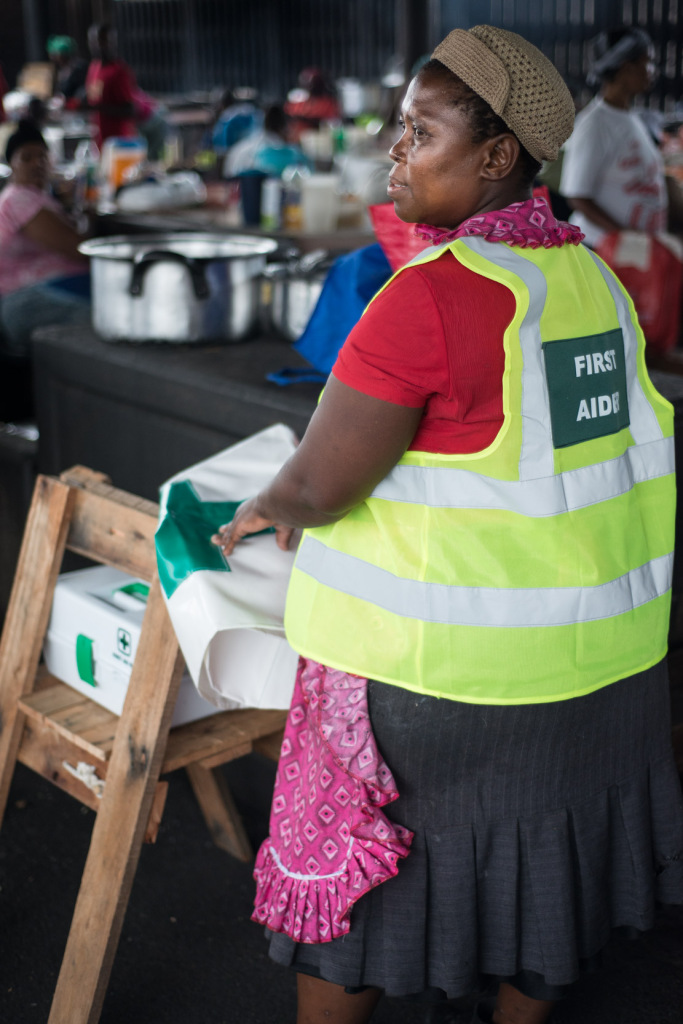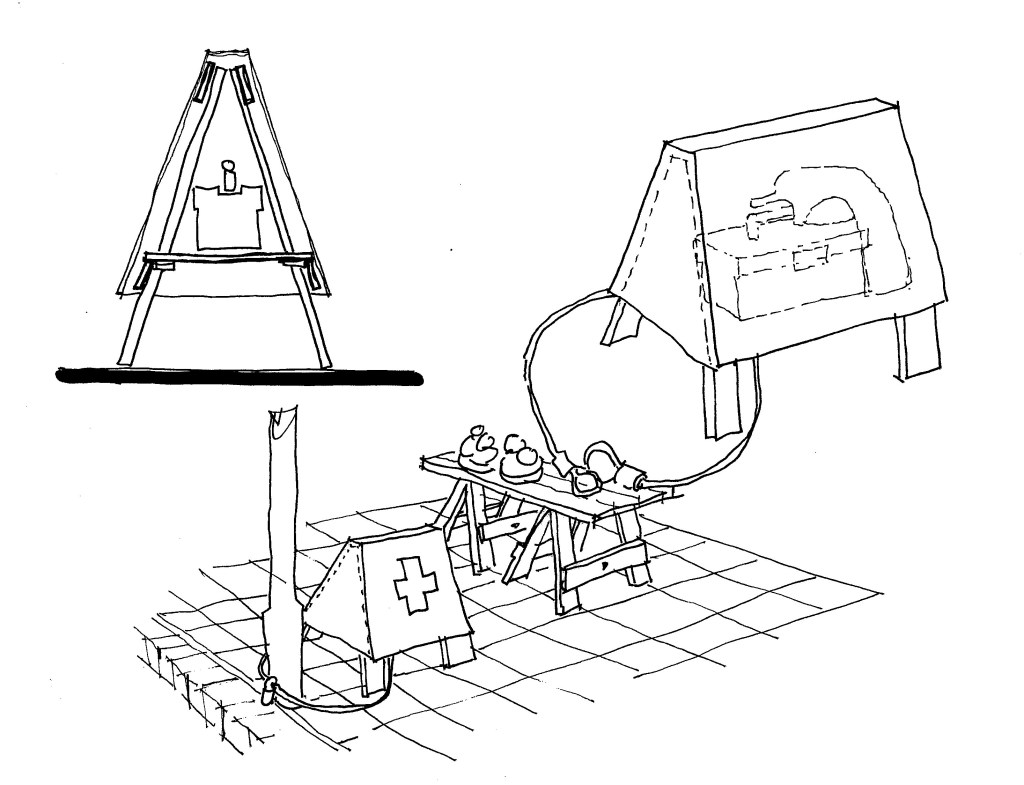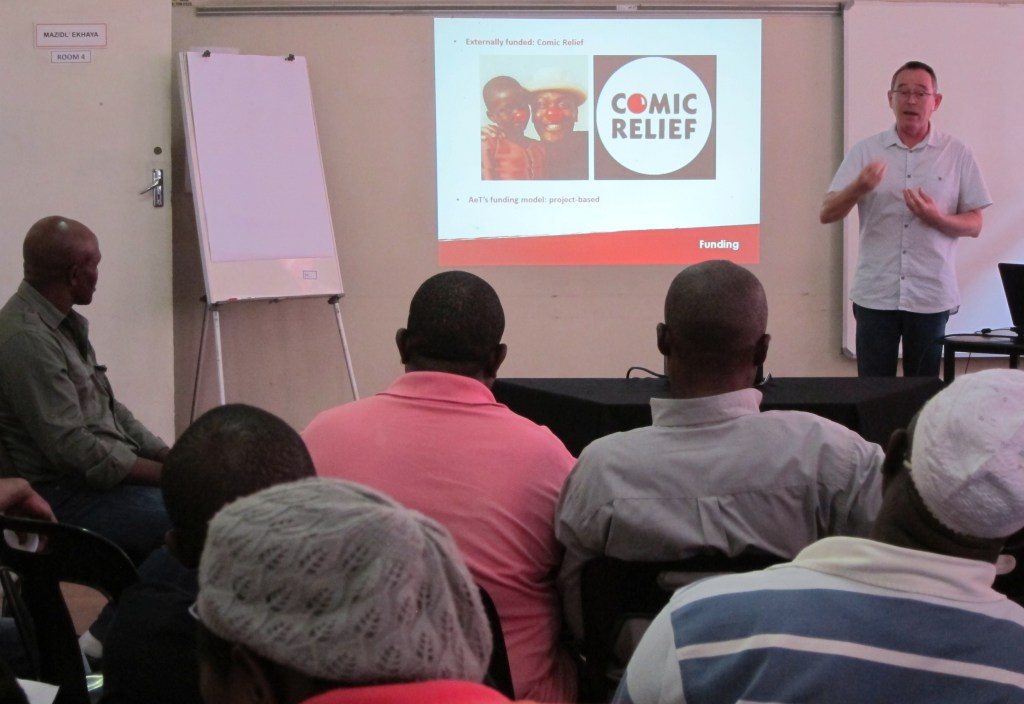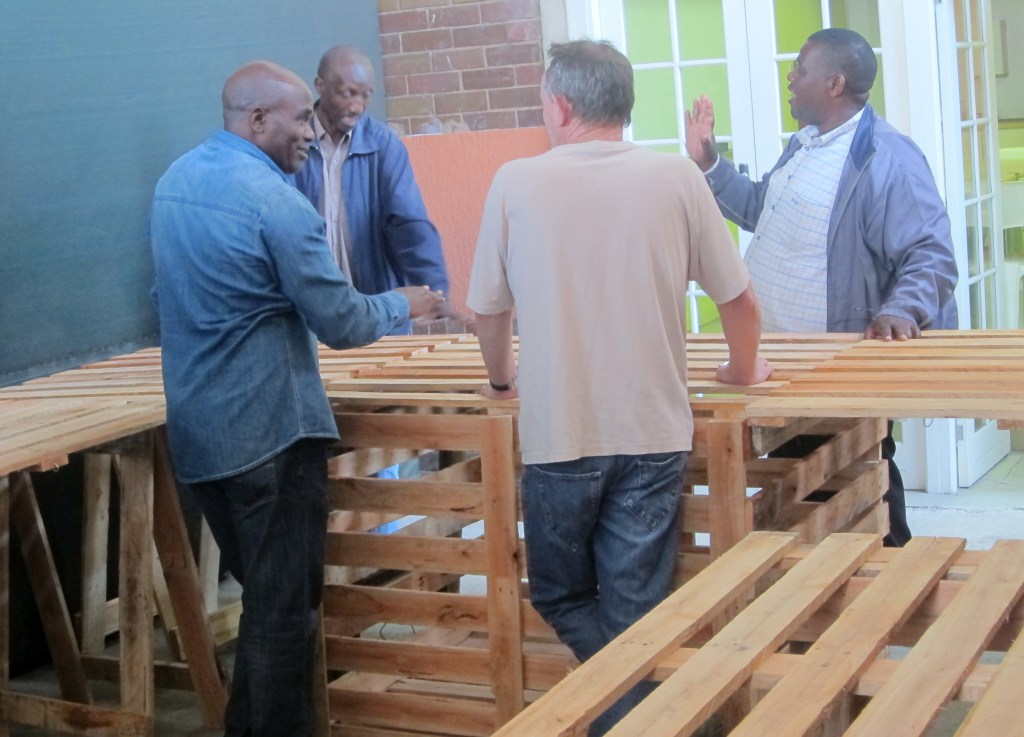Tasmi Quazi
Asiye eTafuleni’s (AeT) award-winning approach involves work in the following areas; design, urban intelligence, education and advocacy. Emanating from these key themes are projects, programmes and activities. This four-series article will elaborate some current examples being carried forward into 2015. The first in the series will reflect on our work in the area of design.

Design: AeT applies design and social facilitation expertise towards solving informal workers’ infrastructure challenges. Some projects include:
- Pephanathi: This is an occupational health and safety project implemented by AeT and Women in the Informal Economy: Globalising and Organising (WIEGO), and funded by the Rockefeller Foundation. One of the objectives of the project is to improve the infrastructure for risk management in Warwick Junction, and design prototypes are currently being tested. For example, collapsible first aid stands for use in open market areas, and exploration of alternative fire-extinguishing devices.

- Mealie Cooks Project: Alternative vending trolley designs are being explored through an Angela Mai and Project Preparation Trust-funded project to assist in reducing prejudicial attitudes and excessive enforcement experienced by mealie cooks and sellers.

- Denis Hurley Traders’ Market Project: Appropriate infrastructure for the traders are collaboratively being explored with the traders, city officials, the Trustee of the Dennis Hurley Centre and taxi association. AeT was commissioned by the Trustee as the Community Liaison Officer in foregrounding traders concerns during the construction and post-construction phases.

- Informal Recycling Project: An urban design pilot has been developed collaboratively with informal recyclers of the original Imagine Durban Cardboard Recycling Project implemented between 2010 and 2012 by AeT and funded by the Canadian International Development Agency (CIDA). In 2013, the Afrisun Community Development Trust awarded the pilot project with implementation funds. Currently, the City’s Inter-departmental Informal Recycling Reference Group is working towards securing additional funds to implement the full scope of the project, including a park and toilet facilities for the public at large.

- Lime & Impepho Market Project: AeT has finalised a design proposal conceived with the informal traders of the Lime and Impepho Market. The community is in need of basic infrastructure in the market to protect them from the elements, and AeT is in the process of engaging potential partners to implement the provision of the identified infrastructure needs.

- Malandela Interchange: Along with other consultants to the City, AeT is providing expertise for the integration of informal workers within the City’s proposed bus rapid transport (BRT) transfer station. This represents a unique and innovative design proposal for the inclusion of street traders in other similar transfer station contexts planned within BRT projects nationally.

- Kanyenathi: [With Us] Building an Inclusive Urban Future: This is new work funded by Comic Relief in collaboration with informal workers from three market districts in the City; the CBD, Warwick Junction and Malandela/Besters. AeT is about to embark on an infrastructure audit to be conducted by informal workers in order to identify their key infrastructure needs. The identification of infrastructure needs will enable AeT and other potential design partners to support informal workers with ideas to uplift and enhance their built-environment conditions.

AeT’s experience has shown that the successful integration of informal workers in inclusive urban planning and design processes and development, depends on a multi-faceted approach encompassing the norms of specific disciplines such as design, social facilitation, research, education and law.

Urban management challenges need to consider design interventions which is often overlooked by local government officials who are at the coal-face of managing informal workers operating from highly pressurised public spaces, also used by commuters and public transport operators.
Contextually responsive and aesthetic design has the power to transform the urban management challenges, negative attitudes towards informal workers and enhance the urban experience for all citizens, especially informal workers and their customers.


